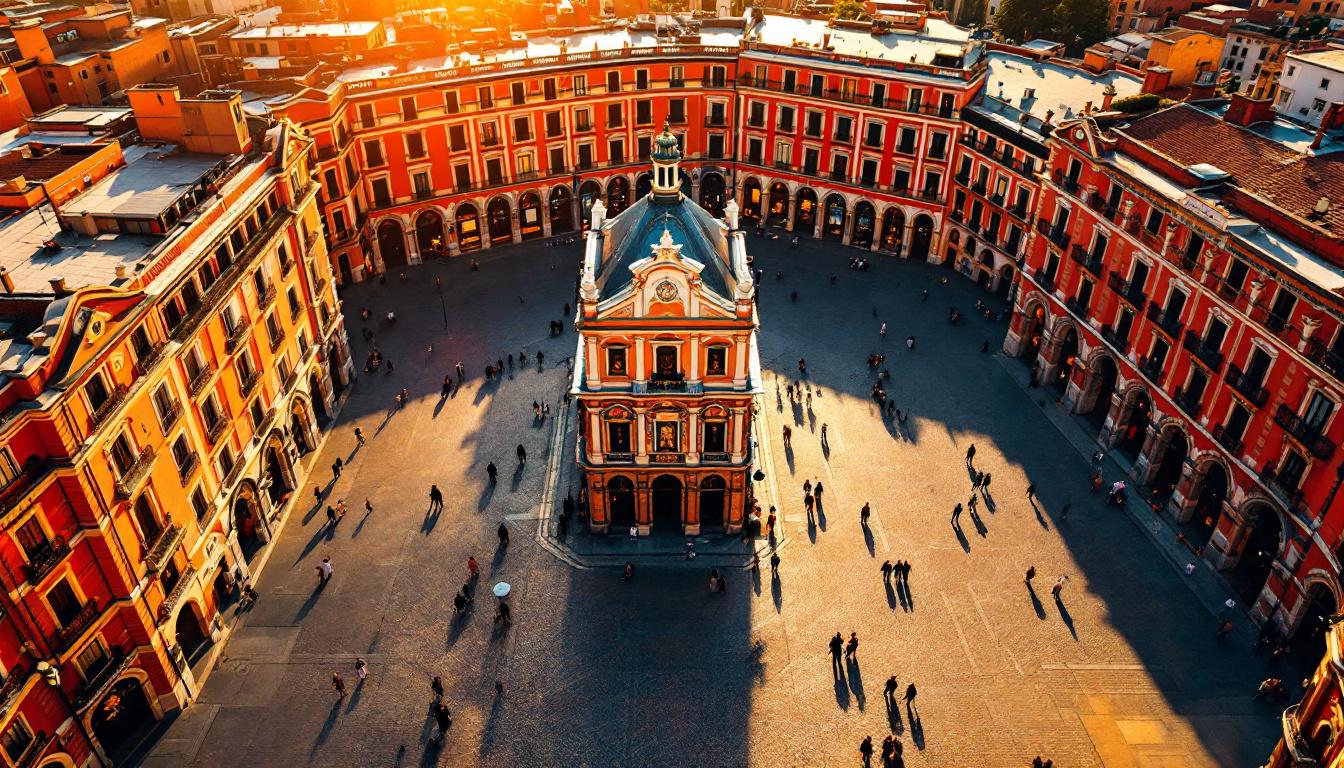Madrid’s Plaza Mayor hides ancient secrets behind its grandeur that few travelers ever discover. This iconic square, with its timeless beauty and vibrant atmosphere, offers more than meets the eye for those willing to look beyond the obvious tourist attractions.
A royal square born from fire and vision
Plaza Mayor wasn’t always the architectural masterpiece we see today. Originally a chaotic medieval marketplace, it was transformed under King Philip III in the early 17th century. The square has survived three devastating fires, with each reconstruction adding new architectural elements. The current design, with its uniform three-story buildings and grand arches, largely comes from the final 1790 renovation by neoclassical architect Juan de Villanueva.
The colorful heart that beats beyond the tourist crowds
While thousands snap photos of the famous equestrian statue of King Philip III, the real treasure of Plaza Mayor is the Casa de la Panadería with its stunning frescoed façade. These vibrant mythological paintings, featuring dragons and bulls in deep blues and reds, tell stories few visitors ever learn about. The building once served as the main bakery, ensuring Madrid’s bread supply, before becoming a royal pharmacy and eventually a cultural center.
“Plaza Mayor isn’t just a square – it’s Madrid’s living room where history whispers from every corner if you know how to listen,” says Manuel Fernandez, a local historian who leads specialized tours of the area.
A morning ritual that reveals the square’s true character
Visit Plaza Mayor at 8 AM to experience a completely different atmosphere from the bustling tourist hub it becomes by midday. The early morning light bathes the reddish façades in a golden glow while locals sip coffee at the few cafés already open. This is when the square belongs to Madrileños, before the crowds arrive. It’s also the perfect time for photography, with the empty plaza showcasing its perfect symmetry.
Hidden doorways to Madrid’s forgotten quarters
While most visitors enter and exit through the same arch, few explore the narrow streets radiating from the plaza. Just steps away from the southwest corner, Calle de Cava Baja reveals Madrid’s medieval roots with some of the city’s oldest taverns serving authentic tapas that tourists rarely discover.
The secret season that transforms the square
While summer brings crowds, December transforms Plaza Mayor into a magical Christmas market dating back to the 1860s. Wooden stalls sell handcrafted nativity figures, novelty gifts, and traditional sweets. The market creates a festive atmosphere unlike anywhere else in Madrid, with locals shopping for holiday decorations as they have for generations.
“Christmas at Plaza Mayor is our most cherished tradition. The market may seem touristy, but look closer and you’ll see families who have been buying their Belén figures from the same vendors for decades,” explains Sofia Morales, a local artisan.
The underground world beneath your feet
Few visitors realize they’re walking above a network of tunnels and cellars dating back centuries. These underground spaces once connected buildings around the plaza and were used for storage, as escape routes during times of political unrest, and reportedly for clandestine meetings. While not open to the public, they represent the hidden history that lies beneath many historic European plazas.
A culinary secret hiding in plain sight
Skip the overpriced restaurants with tourist menus directly on the square. Instead, seek out Mesón del Champiñón on nearby Calle Cuchilleros, famous for its mushrooms stuffed with chorizo and garlic. Or explore the less-traveled streets surrounding Plaza Mayor where local food specialties await at a fraction of the price.
The photographic perspective most visitors miss
While everyone photographs the plaza from ground level, the most breathtaking views come from above. Several buildings surrounding the square have rooftop terraces offering spectacular vistas. The Gourmet Experience at El Corte Inglés in Callao provides one such viewpoint, as does the lesser-known terrace at La Chata restaurant, where you can enjoy traditional Spanish cuisine with an unparalleled view.
Madrid’s Plaza Mayor isn’t just an architectural triumph—it’s a living, breathing space where centuries of history blend with the rhythms of contemporary Spanish life. Its true magic lies not in the grand design but in the intimate moments: the early morning light casting long shadows across empty cobblestones, the animated conversations at crowded tapas bars, and the centuries-old traditions that continue to unfold within its embracing arcades. Like other timeless European spaces, it rewards those who linger, observe, and immerse themselves in its many layers of stories.
